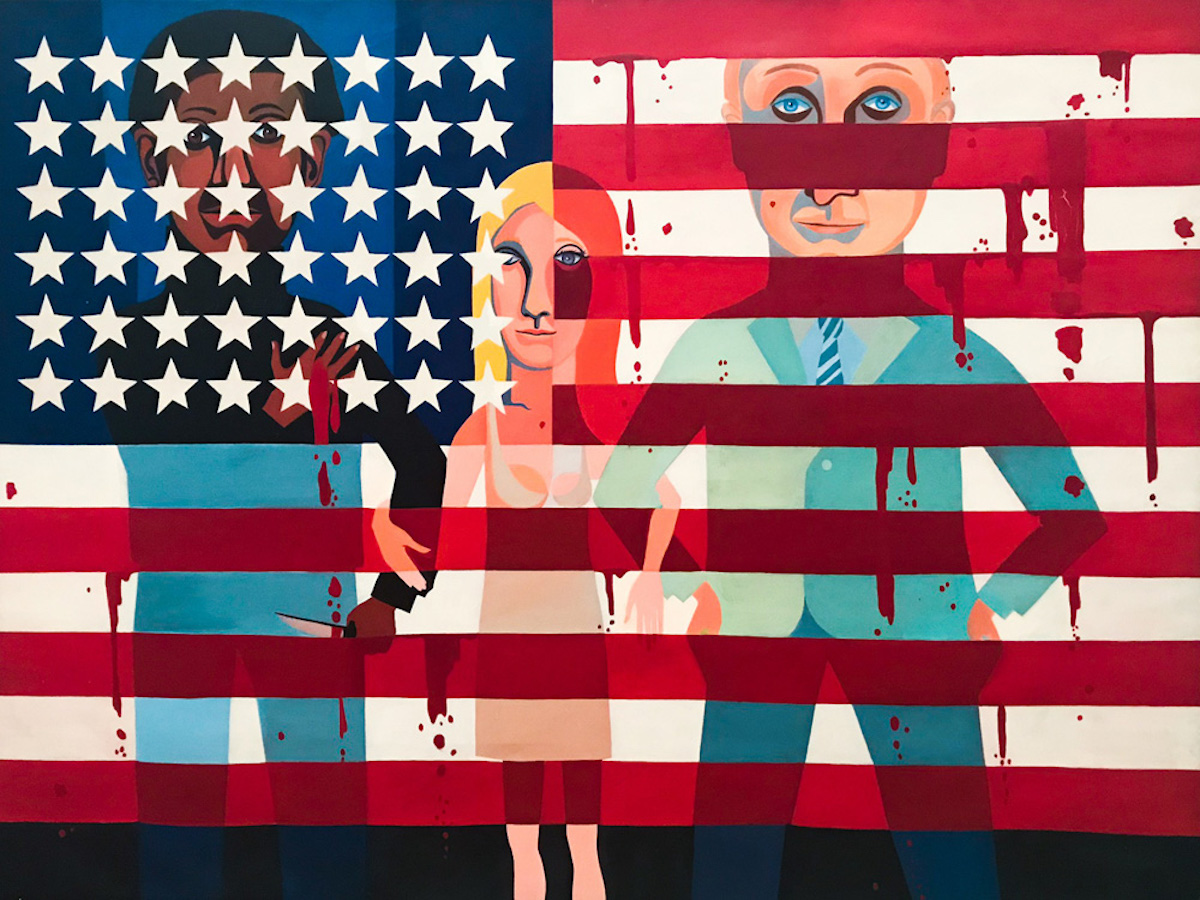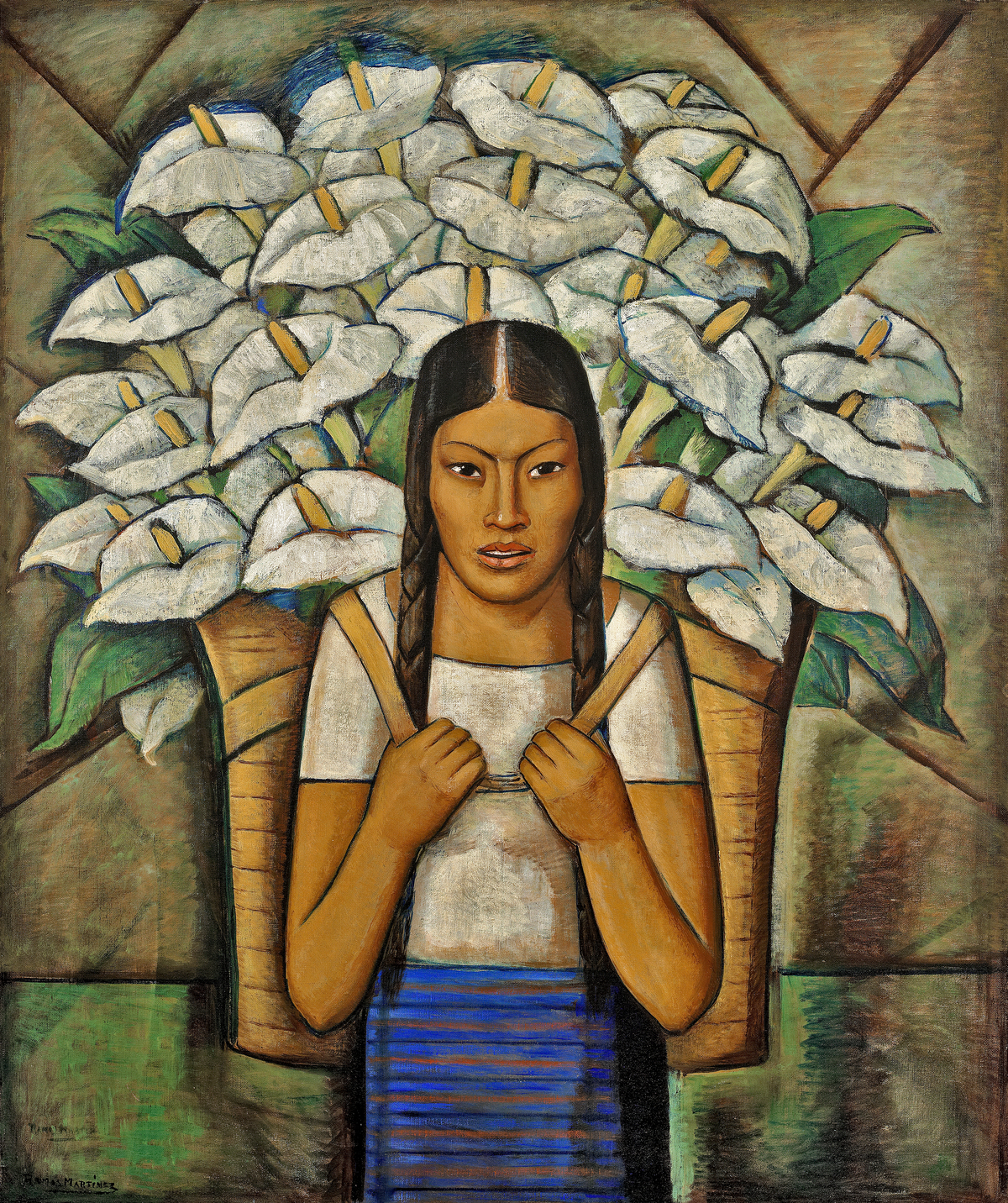
As long as the art world has been bastion for self-expression and radical system-challenging, the structures that make it up have often been exclusionary and narrow-minded. Part of the work of the current fight against injustice is to examine the country’s most enduring fixtures- like art museums- and force the systemic hang-ups that’s baked into them to bubble up to the surface. The question of diversity isn’t a new one in the art world, but in the current moment, these conversations have made themselves urgent, and the numbers are still disturbingly grim.
In March 2019 a group of researchers published a study at the Public Library of Science that surveyed eighteen of the most respected museums in America (like LACMA and the Met), and found that work by Black artists only made up 1.2 percent of their collections despite making up 13 percent of the population, according to the 2019 census. Works by Asian artists only totaled 9 percent of the collections, and Hispanic and Latinx artists only about 3 percent, despite comprising 18 percent of the population. It is worth noting that this study relies on public information about artists, and while the data was peer reviewed, racial and ethnic identity is often personal, thus not always accurately guessable. In any case, the numbers show marked lack of progress when it comes to representation. The National Endowment for the Arts’ 2019 study, “Artists and Other Cultural Workers: A Statistical Portrait,” also provided a comprehensive picture of what working in the art world looks like. They uncovered that from 2012 to 2016, non-white or Hispanic made up nearly 36 percent of the U.S. workforce, but only 25 percent of the artist workforce.

Another 2019 investigation by in other words and Artnet News focused on women’s representation in the art world came up with similarly stark results. They found that from 2008-2018, only 11 percent of all work acquired by the country’s top museums was by women, and that in the same period, only 14 percent of museum exhibitions represented female artists. Additionally, in this timeframe, works by women comprised only two percent of art sold at auction. A 2019 report by Art Basel and UBS underscored these findings with the troublesome fact that “2 works by women have ever broken into the top 100 auction sales for paintings, despite women being the subject matter for approximately half of the top 25.” It is worth highlighting that racially marginalized women were the least represented, with work by African-American women making up just 3 percent of the already small market for women-produced art. These numbers are made more jarring by a 2017 study which found that the Yale School of Art has enjoyed gender parity for over thirty years, indicating that the problem doesn’t lie a dearth of qualified female artists, but rather a system that makes it difficult for women to reach the upper echelons of their field. This research helps disrupt the illusion of progress that special exhibits of women’s work and positive press about acquisitions can generate.

While the case for women in the art world is bleak, it is at least well-studied. When it comes to gender minorities in the art world, like trans and nonbinary creators, much of the data simply doesn’t exist. The majority of studies about gender representation in the art world fall into a binary, focusing on those who identify as female. Large scale research projects about trans and queer representation in the art world are scarce to nonexistent. This gap in research could exist because gender and sexual identities are not easily gleaned from public information, but it also points to a larger pattern of erasure of these communities, not just in the realm of art, but in the world at large.
For Hispanic and Latinx artists, paucity of representation in museums is made possible by everything from barriers to entry for art world jobs, to largely held misconceptions about Latinx art. Artnet reported that only 1.2 percent of work in New York galleries was by Latinx artists, despite being the U.S.’s largest minority group, comprising around 18 percent of the population. In “Critics and the Slippery Terrain of Latinx Art,” scholar Arlene Dávila points to a lack of Latinx-identifying cultural critics, which leads to a system where “Latinx cultural products are often ignored, or covered in faulty and incomplete ways.” She also argues that curators of large exhibits featuring Latinx Art have historically misinterpreted the work, often generating to reductive or essentializing narratives.

However, it isn’t just the baggage of decades of historical legacy that’s holding museums back from achieving equity in their collections. A joint investigation by In Other Words and Artnet News found that from 2008 to 2018, only 2.37 percent of acquisitions and gifts from 30 prominent museums were by African American artists. These numbers suggest that curators, even today, just aren’t seeking out work by minorities. The lack of diversity in the top museums reflects the limited, often Euro-centric lens through which much of these collections are curated. Naomi Beckwith, a senior curator at the Museum of Contemporary Art, Chicago, shared her insights with Artnet. “Historically,” she offered, “what curators have been asked to do is follow a particular storyline—and then when things fall outside that, they are rendered invisible.” The problem isn’t that the work doesn’t exist, but that museum and gallery culture that is still entrenched in centuries-old conceptions of what is considered high art and what isn’t- a culture that was created in service of white male European artists. Curators have, consciously or not, helped whittle art from marginalized communities into monoliths, serving the preconceptions of their predominately white audiences, thus dismissing art and artists that fall outside of those tropes.

In the aftermath of these studies, and more resoundingly in the wake of recent protests, museums and galleries have followed a trend of releasing statements denouncing institutional racism and promising a turn inward. The Whitney committed to “re-examin[ing their] exhibitions and programs to ensure they continue to address the art and experiences of people of color, especially Black communities,” and The Metropolitan Museum of Art’s president and CEO Daniel H. Weiss and Director Max Hollein expressed a need “to grieve and to reflect on how we, as individuals, and as a museum, can do more to support social justice efforts in this country.”
The Guggenheim, though, is experiencing perhaps the most palpable reckoning, after a letter signed from “The Curatorial Department” was recently sent to the museum’s leadership, demanding initiatives to correct the institution’s history of maintaining white supremacy. Earlier this month, Chaédria LaBouvier, the first Black woman to ever curate an exhibit at the Guggenheim, spoke out against the museum’s working culture, claiming racist mistreatment by high-ranking staff while putting together her Basquiat exhibition. The museum quickly hired its first full-time back curator, Ashley James, after the controversy with LaBouvier came to a head during a panel in November 2019. The Untitled Magazine interviewed Ms. James in 2018 about “Soul of a Nation: Art in the Age of Black Power,” an exhibition she curated at the Brooklyn Museum. She spoke about the importance of recognizing Black artists’ contributions to the development of art, and hoped visitors to the exhibit came way “Learning that black artists were at the forefront of the avant-garde, and were experimental, and that they were creating with a sense of desire to make things new- and this exuberance, this feeling of urgency.” Bringing James’ inclusive and invigorated curatorial lens of to the Guggenheim is a step toward healing the institutional ills of the historic museum.

But even outside of the institutional magnitude of major museums, the case for racial representation does not fare much better. According to a 2017 study by CUNY Guttman’s James Case-Leal, in 45 of New York’s top tier galleries, work by white artists make up a whopping 85 percent of collections. The study has come under some scrutiny, since the artists did not personally validate their racial identities, but they rather were inferred from public information, though the results do echo that of the major museums. This racial disparity reflects on the financial side, too, with work by African American artists making up only 1.2 percent of the global auction market over the past 10 years, according to the Artnet Price Database. The same study showed that 77 percent of that already small market was works by artist Jean-Michel Basquiat. A similar phenomenon holds true for women in the art world. Another study from Artnet and In Other Words found that five female artists make up 40.7 percent of the market for women-produced art (the artists in question: Yayoi Kusama, Joan Mitchell, Louise Bourgeois, Georgia O’Keefe and Agnes Martin). While these stats underscore these artists’ widespread reputations as genius creatives, they also highlight just how hard less recognized artists have to work to take up space in the market.
For queer artists, representation in the art world is marked by a similar process of tokenization. In his article “Where Is Queer,” scholar Greg Bak notes that “Many LGBTQ exhibits are ‘one-dimensional,’ in that they are either hyper-sexualized exhibits about kinky and often taboo sex or de-sexualized exhibits where the presence of HIV/AIDS makes LGBTQ people the subject of pity.” Again, any art that challenges common preconceptions of a certain group can be obscured, and innovative artists are left without avenues to success.

Considering the grim facts of diversity in the art world, it’s important to recognize the projects that take tangible and direct steps toward a more equitable industry. Art4Equality is one of the smattering of organizations that have stepped in and created opportunities for underrepresented artists. Their latest project entitled “Art4Equality, Life, Liberty, and the Pursuit of Happiness” presented in collaboration with non-profit SaveArtSpace is commissioning emerging artists to create public art in the form of billboards, taking vital messaging outside of the white walls of large museums and making it accessible to those haven’t been historically welcomed in traditional art spaces. The Feminist Art Project is grassroots organization that uses archive projects, panels, and networking programs to fight the erasure of women’s historic and current contributions to the art world. The Professional Organization for Women in the Arts and ArtTable were both created for the benefit of working women in the art world. The Elizabeth A. Sackler Center for Feminist Art is a rare example of a permanent feminist exhibition at a major institute- the Brooklyn Museum. The Black Artist Fund provides direct aid to Black artists through donations and art sales, and the Black Trans Femme Arts Collective connects some of the community’s most vulnerable artists. The Latinas Art Foundation addresses the lack of appreciation for Latinx art through their mission to educate, research, and provide scholarships for women and girls. These are just a sampling of the many organizations currently working toward a more equitable art community; but they don’t just work to aid marginalized artists, they benefit the art community at large, enriching it with opportunities for artistic diversity.
The onus of representation lies with those with power in the art world, and those who choose wield their institutions to challenge narrow-minded industry standards are more vital than ever. It’s time for gallerists, curators, and executives to not only take stock of their role in complacency, but to start vigorously re-writing that role. Only when the art world actively uplifts the artists who make America what it is, will it truly become a revolutionary space.


